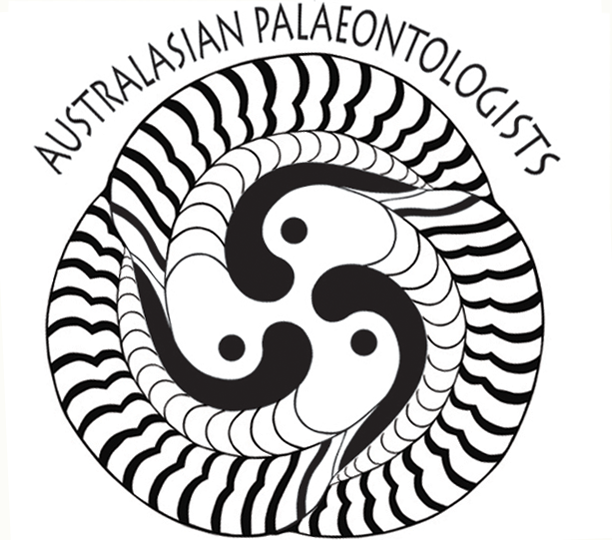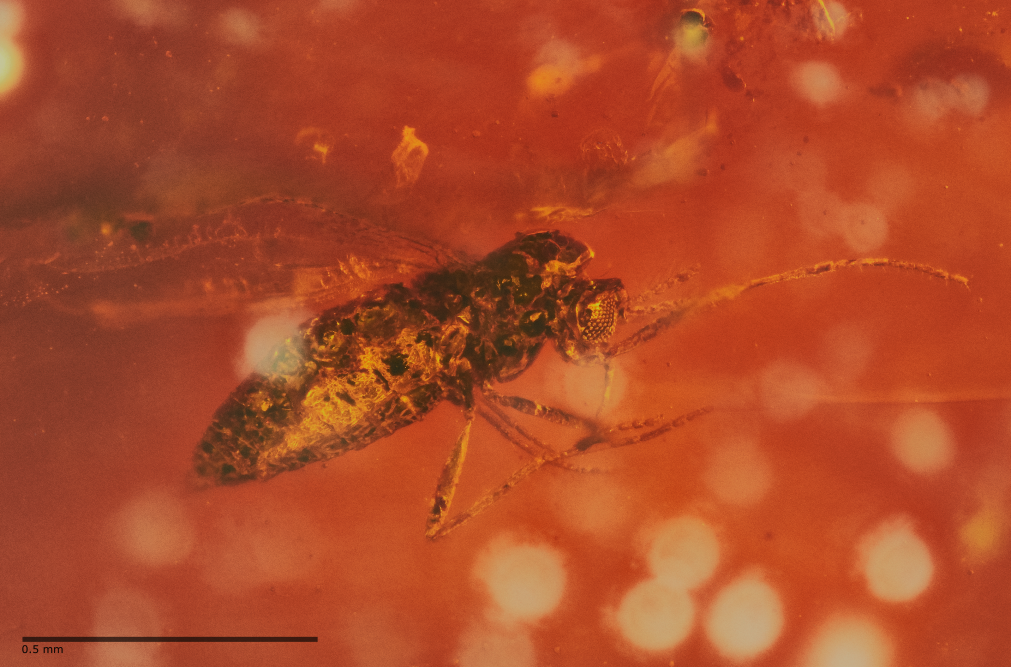1. Adele Pentland – The most thrilling discoveries are made together. Professor Martin Van Kranendonk from Curtin University and colleagues marvel at the ~3.43 billion-year-old stromatolites from the Strelley Pool Formation alongside Nyamal Rangers, the Traditional Custodians of the Pilbara region, Western Australia.
2. Harrison Jarman – Field Emission SEM image of nannofossil calcareous ooze from ODP Site 765B, Argo Abyssal Plain, northwest Australian margin (-15.976, 117.5752). Assemblage is from Upper Pliocene Unit I (~ 3–4 Ma) and includes Discoaster (star - shaped coccolithophore). Image was captured using a JEOL JSM- IT 800 SEM with a FOV of 51.2x 38.4 μm. Image credit: Dr Karen Privat, Electron Microscope Unit MWAC, UNSW.
4. Lucinda Hook – Pictured (above/below) is a plate of several ironoxide-stained Glossopteris sp. leaf fossils typical of Central West NSW, Australia. This plate was self-collected and recovered from the Permian-aged Illawarra Coal Measures beds of Dunedoo. The Glossopteris a genus of dominant, but now extinct, seed ferns. They had deciduous leaves with characteristic midrib and reticulate venation of the leaves. The main leaf is 16cm long. Wiradjuri Country.
5. Lucinda Hook – Pictured here is a well-preserved leaf fossil of the Glossopteris ampla. One of the many species of Glossopteris, this one is distinguished by the larger leaves often over30cm long. This example is 33cm long. I extracted this large block from the hillside layer of the Permian aged Illawarra Coal Measures Formation, located in Kains Flat, NSW, Australia. Wiradjuri Country.
3. Lucinda Hook – Another rare Australian trilobite from my little collection of self-collected fossils. Prophalaron is a genus of trilobite belonging to the family Calymenidae. It was discovered in the Late Ordovician Gunningbland Formation, Gunningbland, New South Wales, Australia. Specimen is 4cm long. Prophalaron is classified within the Calymenidae, a family of trilobites known for their distinctive body shape and segmentation. Wiradjuri Country.
7 (left). Miriam Slodownik – Komlopteris cenozoicusis a seed fern that outlived its Mesozoic relatives by millions of years. UV light revealed its fine venation and glands, allowing us to trace the lineage into the Jurassic. This~50–53million-year-old fossil was found in the Macquarie Harbour Formation, Timkarik region, Lutruwita, western Tasmania.
6. Maria Blake – Trapped in 42-million-year-old Anglesea amber—a rare Australian find—this tiny Ceratopogonidae midge sparked the thrill of discovery. A Gondwanan relic from Wadawurrung Country (Anglesea coal mine, Victoria), it connects ancient Eocene ecosystems to today’s Australian rainforests, where its descendants still fly.
8 (below). Patrick Nelson – Arumberia banksi (Glaessner and Walter, 1975) fossil from the Ediacaran-early Cambrian Arumbera Sandstone in the Arumbera Range, 9km SSW of Alice Springs (-23.778207, 133.853457) in Arrernte country. The thrill of discovery peaked upon making this find. I had searched outcrops of Arumbera Sandstone in central Australia perhaps 50 times over several years in search of this enigmatic Ediacaran metazoan, without success. But on 12 July 2025, after just10 minutes of fossicking, there it was, basking in the midday sun, begging to be found. My love tank was full. My colleague that day (Dr Adam Yates) also found a specimen a few short metres away.








